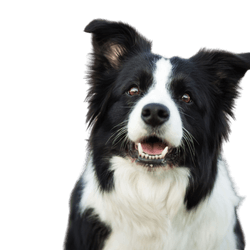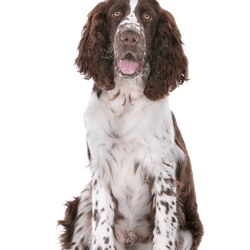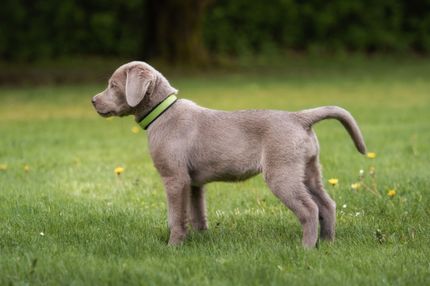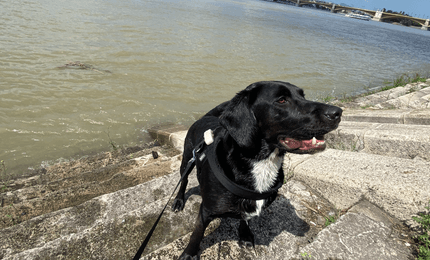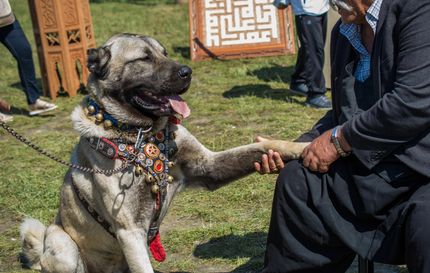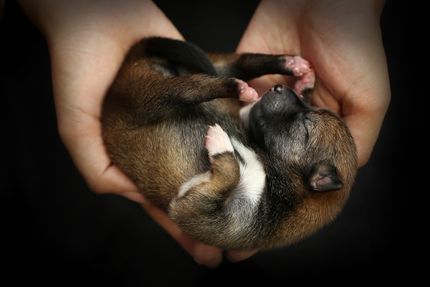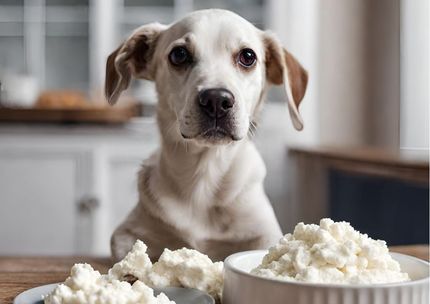Facts & Origin
Origin of the Sprollie
The Sprollie is a relatively young mixed breed that originated from crossing an English Springer Spaniel with a Border Collie. The aim was to combine two intelligent, hard-working breeds in order to create a particularly efficient, agile and eager-to-learn dog.
The first Sprollies probably originated in Great Britain, particularly in rural areas where farmers specifically bred dogs that could herd, retrieve and work in the field. Unlike many designer dogs, the focus here was usually not on looks but on working ability.
Criticism of the Sprollie
Even if the Sprollie appears at first glance to be a successful mix of two popular breeds, there are some critical aspects to consider. Both parent breeds - the Border Collie and the Springer Spaniel - are among the most powerful and intelligent dog breeds of all. They were originally bred for demanding work tasks.
This results in a central problem: many Sprollies end up with people who underestimate the high demands on activity and exercise. If the dog is not kept mentally and physically busy, this can lead to behavioral problems, nervousness, hyperactivity or even compulsive behavior.
In addition, many mixed breeds such as the Sprollie lack standardized health checks, as they are usually not b red within the framework of controlled breeding associations. A reputable origin is therefore particularly important.
Suitability of the Sprollie
The Sprollie is ideal for active people who enjoy exercise, dog sports and intensive activity. They are generally intelligent, willing to learn and eager to work. Anyone who enjoys training with their dog will find the Sprollie to be an extremely attentive and efficient partner.
He is particularly well suited to sporty families, farms or people who are enthusiastic about agility, obedience, mantrailing or other dog sports. The Sprollie is rather unsuitable as a pure companion dog or apartment dog without regular mental and physical stimulation.
However, with consistent but friendly training, clear structures and sufficient activity, the Sprollie can develop into an exceptionally loyal, friendly and versatile companion.
| Alternate Name | Border Collie-Spaniel, Spanollie, Border Springer |
| Origin | UK |
| Life expectancy | 10 - 15 years |
| Care requirements | high-maintenance |
| Activity level | high - average to high |
| FCI group | not recognised |
| AKC group | not recognised |
| KC group | not recognised |
More Border collie mixes
More Springer Spaniel mixes
Attitude, character and temperament of the breed
Possible character traits
The Sprollie is considered to be highly intelligent, eager to learn and willing to work. These characteristics come from both parents - both the Border Collie and the Springer Spaniel have been bred for performance over many generations. Sprollies therefore often show a strong bond with their caregiver, are very attentive and have a pronounced need for mental and physical activity.
Typical is a pronounced will-to-please - i.e. the desire to please their human and fulfill tasks. At the same time, Sprollies can also be sensitive and quickly overwhelmed if they are not given clear guidance or too little structure. If they are not kept busy, they tend to become frustrated, restless or display undesirable behavior.
In an active environment, they are often friendly, socially acceptable and cheerful. They are usually good family dogs, provided they are kept busy enough, but can also become a "problem dog" if they are bored.
Character
Possible diseases of the Sprollie
As with all mixed breeds, the risk of disease depends on which genetic predispositions prevail. Both original breeds have certain hereditary diseases that can also occur in the Sprollie.
These include, among others:
Hip dysplasia (HD) - a malformation of the hip joint that can lead to pain and restricted movement.
Epilepsy - a well-known problem, especially in Border Collies.
Progressive retinal atrophy (PRA) - a gradual eye disease that can lead to blindness.
Ear infections - due to the Springer Spaniel's drooping, hairy ears.
Allergies and skin problems - as with many modern breeds.
Serious breeding with demonstrably healthy parents is important. A good diet, regular exercise and veterinary check-ups also contribute to the dog's health.
This is what a Sprollie can look like
As the Sprollie is not an officially recognized breed, its appearance can vary. Most Sprollies are between the Border Collie and the Springer Spaniel in size, i.e. around 45 to 55 cm shoulder height and 15 to 25 kilograms body weight.
The body is usually athletic and slim, with well-muscled legs and an overall athletic appearance. Many Sprollies have the long, dense coat of the Border Collie, often combined with the coloring and markings of the Springer Spaniel. The coat texture can be smooth, wavy or slightly curly and is usually of medium length.
The coat colors range from black and white, brown and white, tricolor to speckled or mottled varieties. The ears are often drooping, sometimes semi-erect, the eyes are usually expressive and almond-shaped. The tail is medium to long, often bushy and is often carried upright when active.
Overall, the Sprollie looks like an active, attentive and lively dog - with a look that literally asks to be kept busy.
| Fur length | medium |
| Fur | flat coated - curly |
| Ear shape | Standing Ears - Floppy Ear |
| Tail | fanned out |
| Anatomy | slim, sporty, slim |
| Size ♀ | 46 - 53 cm |
| Weight ♀ | 12 - 23 kg |
| Size ♂ | 48 - 56 cm |
| Weight ♂ | 14 - 25 kg |
| Suitable For | - |
Known Diseases
Epilepsy
Definition: Dog has epilepsy if, for example, at least two epileptic seizures occur more than 24 hours apart.
Eye diseases
Often occur with allergies and intolerances.
FAQ
-
A Springer Spaniel and Collie mix is a cross between a Springer Spaniel and a Collie. This hybrid dog is also known as a Collie Spaniel or Spanollie.
-
A Springer Spaniel and Collie mix can look different, but generally have the head, ears and coat of a Springer Spaniel and the body and coloring of a Collie.
-
This mixed breed is known for being intelligent, loyal and affectionate. They are usually good with children and other animals.
-
This breed needs moderate exercise, including daily walks and playtime. They also enjoy activities such as swimming, fetch and agility.
-
The average life expectancy of this hybrid breed is 12-15 years.
